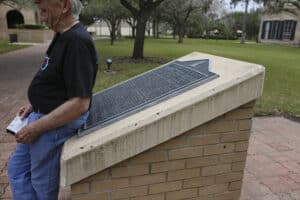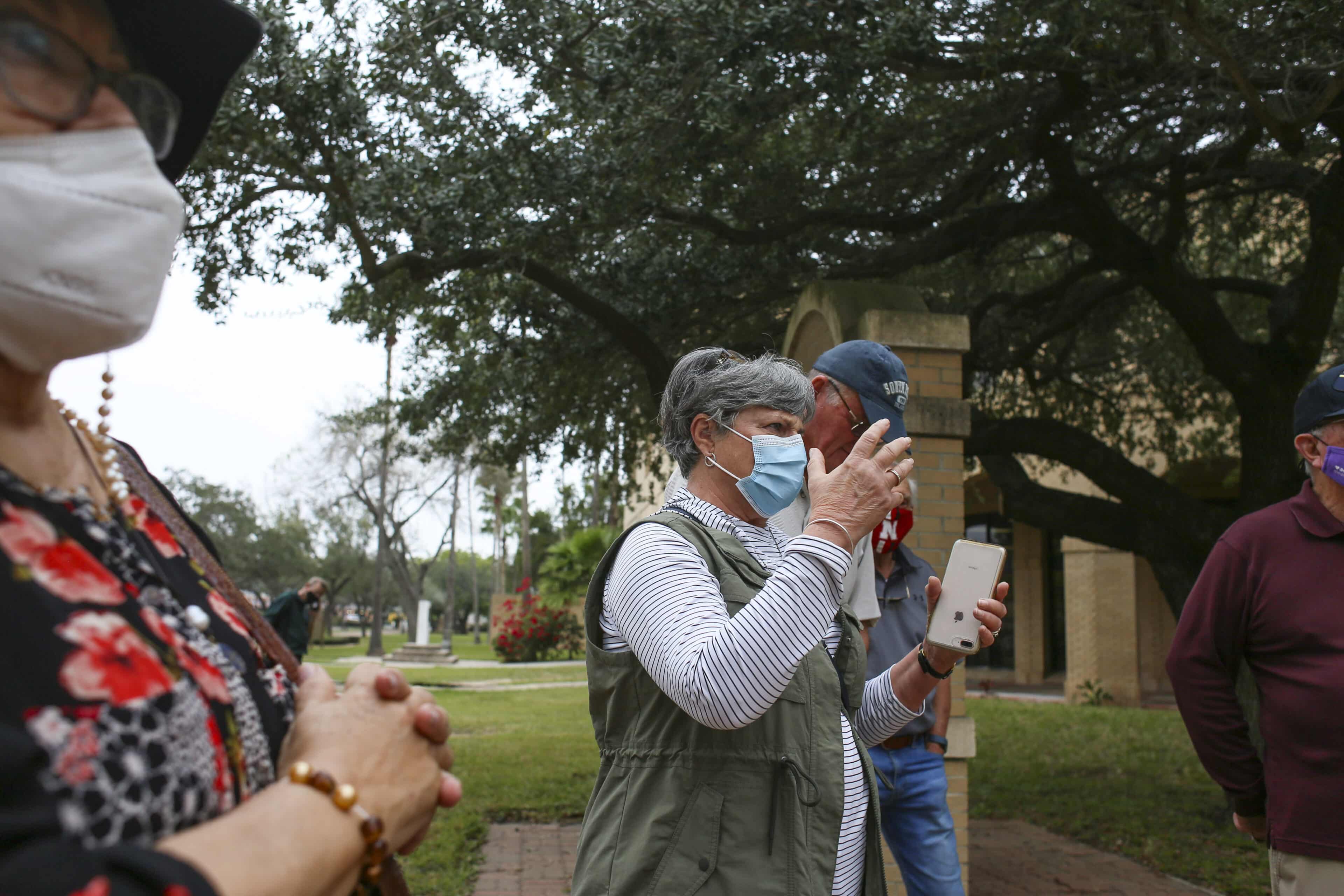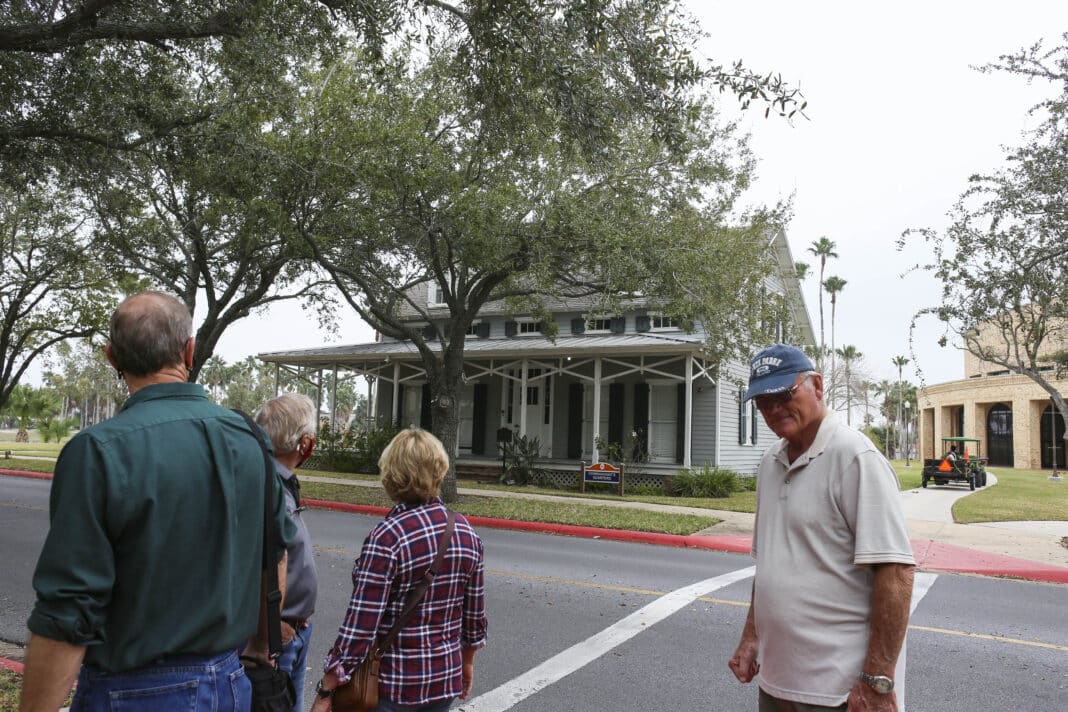
It’s a grey Saturday morning when Anthony K. Knopp, Emeritus Professor of History at University of Texas Rio Grande Valley, leads his group of 11 history aficionados from the Stillman House Museum to the remnants of Fort Brown at Texas Southmost College for the start of his historical walking tour.
The walking tours are part of a yearly rotation of events put on by the Brownsville Historical Association for more than a decade to peel back the veil on local history for natives and visitors alike.
“I think they get a little bit more of the flavor of our community’s history and the experience of the past by walking around and seeing things that maybe they’ve never bothered to notice before or take a look at,” said Knopp.
“It’s good exercise too,” he adds.
This particular tour focuses on Fort Brown, which served as a working military outpost from 1846 during the Mexican American War until 1944 when it was decommissioned and later made a part of Texas Southmost College.
“It’s difficult for me to get students to understand the impact that Fort Brown had on the community,” he explains.
For Brownsville, the fort served not only as a part of daily life, but as a hub for events of consequence in the community from dances at the fort’s motor pool to weekly band concerts, sporting events and the very real contributions soldiers made to the community’s economy.
“When you close a military post it has a big impact on the community,” he said.
For Iowan Winter Texans Barbara and Paul Lubbers, tours like these that explore and explain local history are part of the appeal of visiting new areas.

“It’s just a wonderful time for us to get away and learn about another environment and histories and topographies,…so we try to learn as much as possible when we are here,” said Barbara.
On the tour Knopp discusses the history of Fort Brown with all the sureness and humor of introducing a beloved friend of many years, deftly mixing the far-flung past with stories from his own experiences for his rapt audience.
When the group makes the trek from the parking lot outside of the Jacob Brown Auditorium to the other side of the street, Knopp stops to point out a small two-story green 19th century house, dwarfed by the Texas Southmost College Performing Arts Center. The building, formerly the Commanding Officer’s quarters at Fort Brown, had been moved from its previous site to make way for the center and had, for a number of years, served as the TSC President’s home.
Knopp shares the story of a man he knew was invited by the university to live there.
“He moved in and a couple weeks later he came to some of us and said ‘what is that sound? The clop, clop, clop that sounds like military drilling. Is there some military unit here?’ We had to tell him that there was not. So what was he hearing? Could it have been the ghosts of Fort Brown…,” said Knopp pausing for dramatic effect.
“… Or could it have been the Mexican naval base right across the river, where the sounds wafted over,” he said and the group laughed.
“The ghost stuff always sounds much better and more exciting than reality,” Knopp confides with a grin.
In February the Brownsville Historical Association will be holding two more walking tours focusing on the Mitte Cultural District on Feb. 5 and the Old City Cemetery on Feb. 20 at 11 a.m.,. The fee for BHA members is $5 and for non-members $10 and reservations can be made by calling (956)-548-1313. For more information visit www.brownsvillehistory.org.





